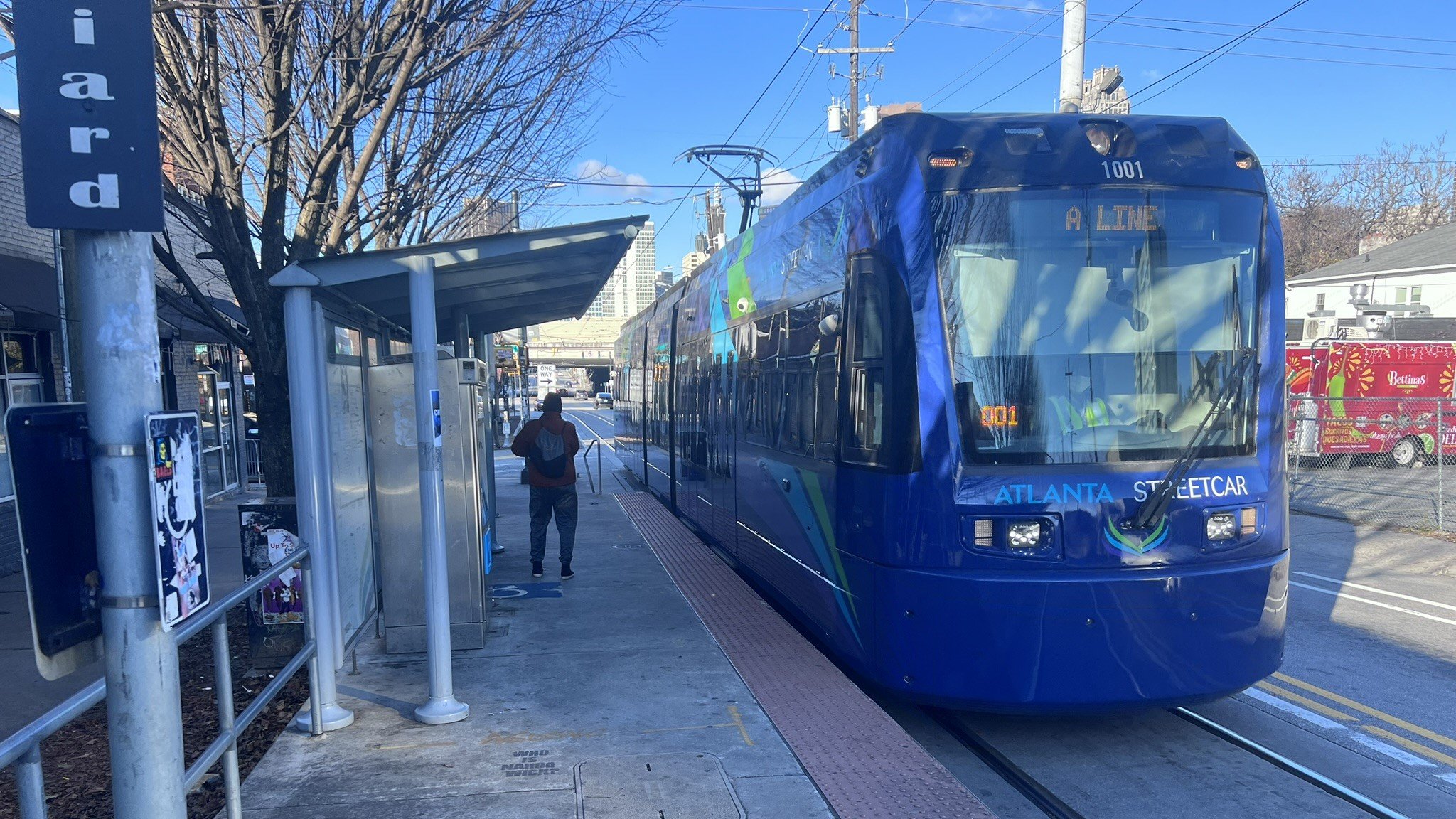Dobbins to city: Base new transit plan on need
Michael A. Dobbins is a former Atlanta planning commissioner who's since served as a city planning professor at Georgia Tech. He wrote this technical memorandum for the BATblog. The memo shouldn't be taken as the official position of Better Atlanta Transit, but represents the former commissioner's thinking on Atlanta transit and the Beltline.
A growing number of civic-minded Atlantans are coming to realize that the city’s long-standing transit strategy and plans won’t address its transportation challenges.
Over the last several months, Mayor Andre Dickens has put in place new and welcome Transportation Department leadership. I am hopeful that they will prioritize replacing the city’s flawed current transit plan with one that is technically sound and attuned to the times. Below, I’m sharing my most recent effort to frame the issue and to suggest what to do about it.
Mike Dobbins, BAT Board Member
Background
In 2015, the city adopted the Atlanta Streetcar System Plan. It is still on the books.
The streetcar plan calls for 62 miles of streetcars as the “solution” for Atlanta’s transit needs, of which 51 miles are considered priorities. At its heart is a proposal to install a streetcar around the entire loop of the Atlanta Beltline, an idea that itself was rooted in Georgia Tech student Ryan Gravel’s 1999 master's thesis.
Prepared by Atlanta BeltLine Inc., the plan does not consider other transit modes. It does not include analyses of ridership potential, nor equity of access, nor origin and destination patterns. It lacks an environmental impact assessment.
The streetcar plan also offers little information and no analysis about how much it would cost to implement nor where the money would come from. Finally, it does not project how many years it would take to get it done.
Nevertheless, subsequent transportation-related plans have carried the Streetcar System Plan forward. The 2016 More MARTA transit referendum was largely based on prospective projects from the plan.
Current Status
In the intervening seven years, a lot has happened related to sound transportation planning. Neither the 2015 plan nor the 2016 referendum took into account the game-changing travel and transit transformations that have occurred over the 10 or so years.
Technological breakthroughs, from Lyft and Uber to electric bikes, scooters, and skateboards, and now autonomous vehicles, have changed the game. Together these offer more and more options for how to build transit networks that respond more flexibly to demand, that can build ridership and that cost a fraction of light rail.
Further, COVID has altered and disrupted land-use settlement patterns. The uncertain implications this disruption has for building uses and real-estate development will continue to change travel patterns.
These events and technological breakthroughs have accelerated radical shifts in travel behavior. People are actively seeking alternatives to the personal car for their daily needs. The ubiquitous rise of trails and bike lanes is inducing healthier living habits – not just exercise, but also socialization opportunities. It’s not surprising that, over that time, the BeltLine trail/park system has emerged as a popular resource for accommodating and accelerating these behavioral changes.
Impacts
Right now, to accommodate a two-track light rail system on the whole loop, ABI is grading, flattening and deforesting several more miles of rolling forest land in both the southwest and northeast quadrants of the Beltline.
Of immediate concern: Based on the outdated 2015 plan, the city has insisted that MARTA connect the downtown streetcar to the Ponce City Market area. This project would cram the rail project through residential and small-business neighborhoods into and along the Beltline trail and park right-of-way. It would replace undeveloped portions of green and tree-dotted right-of-way with a concrete bed, a double set of tracks, safety barriers, overhead wires and the trains themselves, and it would squeeze users of the ever-more popular trail into a more constricted corridor.
Among other problems, the Beltline streetcar would prevent the city from meeting the growing functional and safety need to expand the trail to separate people on foot from people on wheels. It would severely limit cross-connectivity from one side of the Beltline to the other. It would disrupt the lively business and culture scene that has popped up west of the trail over the decade and a half since the first portions of the trail and park opened. The disruption from the projected five-year construction timeline for the first section of the streetcar would wreak havoc on existing, stable residential and small business use patterns.
Finally, the segment connecting the current streetcar terminus to Ponce City Market would alone cost upwards of a quarter of a billion dollars. Streetcar advocates estimate that their plan to extend rail around the entire Beltline loop would require $2.5 billion. That is likely to be a low estimate.
Meanwhile, the idea that development would not occur without the streetcar has been utterly dispelled. As it is developed, the trail network is stimulating increasing business and housing investment, albeit escalating housing costs and displacing lower-wealth people. Yet in the face of these technological, settlement-pattern, and behavioral changes, ABI remains locked into the 2015 streetcar plan and the related 1999 Beltline proposal.
What to do about it
So, before spending hundreds of millions of additional dollars on flawed plans, in this case, the streetcar extension onto the Beltline, it would be prudent to step forward with a comprehensive transit planning effort. Key principles for guiding that planning must include:
Pausing current plans and projects to incorporate transformative technological, behavioral, and feasibility problems and opportunities into a comprehensive and sound transit plan
Ensuring that equity underlies the entire planning process, with an aim toward connecting people who are transit-dependent to jobs and other destinations (coincidentally this is the most effective strategy for building ridership).
Recognizing the need for heightened transit connectivity between emerging origin and destination hotspots, like the need, case in point, to better connect the Ponce area to Downtown and to Midtown,
Incorporating consideration of all existing and emerging alternative travel modes, for example in this case, even removing and replacing the usually empty downtown streetcar with more flexible and properly sized electric, rubber-tired, and maybe autonomous vehicles
Filtering the planning process through implementation hurdles, sources and uses of funding, capital and operating cost-benefit analyses, collaboration strategies, and time of performance realities, and
Committing to a planning process that is open, transparent, interactive, and fun
Finally, the city and MARTA should stop spending money on projects that don’t work. For the BeltLine, build on its strengths as a trail/park network, where user demand is growing, and where development investment continues to rise.



